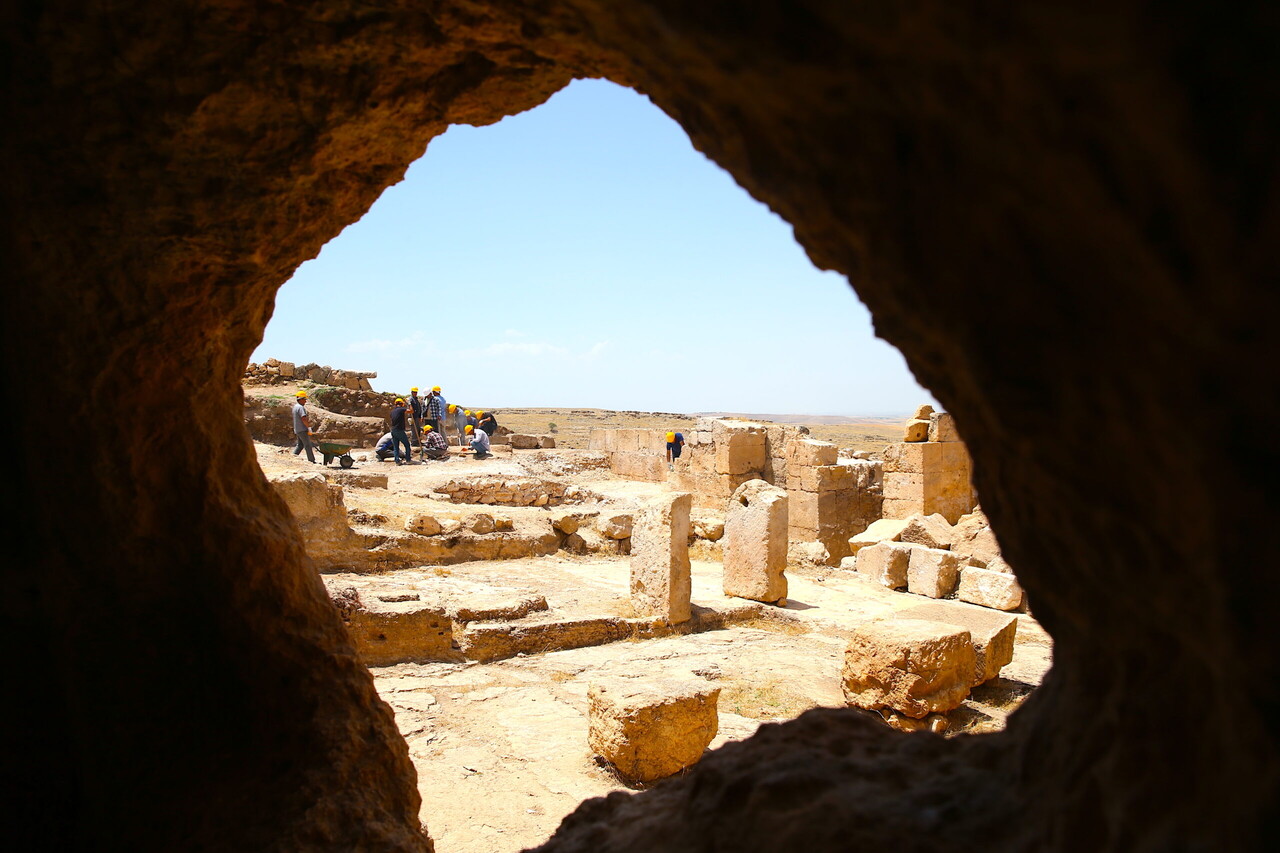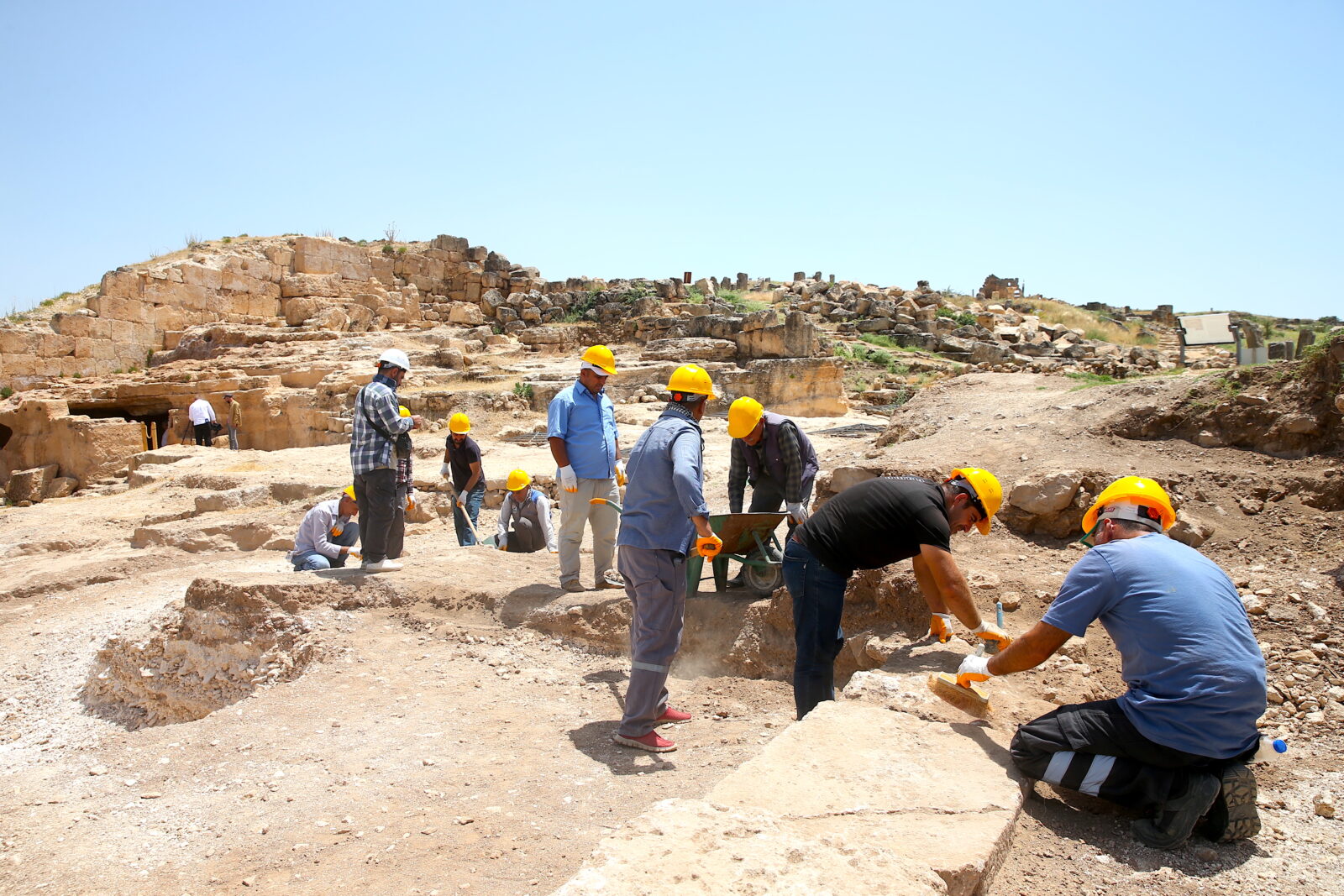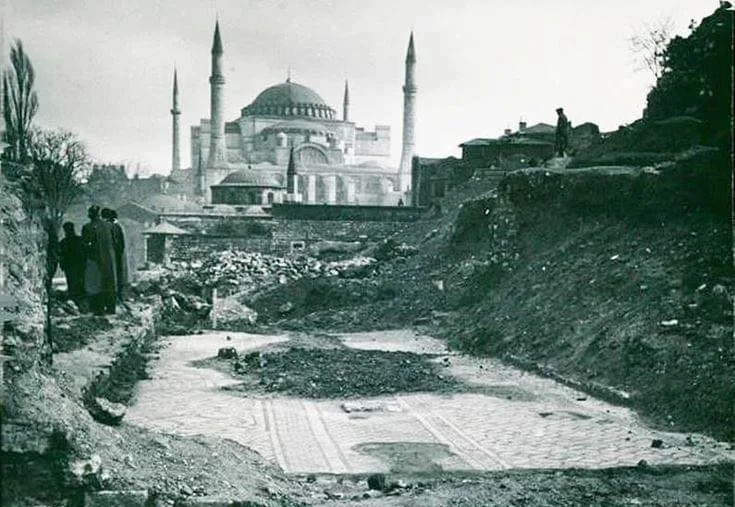Mysterious secret chamber uncovered at Mithras temple reveals hidden rituals
 The area where participants of secret rituals were housed at the Mithras Temple, in Diyarbakir, Türkiye, July 5, 2024 (Photo by AA Photo)
The area where participants of secret rituals were housed at the Mithras Temple, in Diyarbakir, Türkiye, July 5, 2024 (Photo by AA Photo)
In ongoing excavations at Zerzevan Fortress in Diyarbakir’s Cinar district, archaeologists have uncovered an area where participants in secretive rituals at a 1,900-year-old underground temple of the Mithras cult once lodged.
Located near Demirolcek, 13 kilometers from the district, Zerzevan Fortress served as a military settlement during the Roman Empire period and stands as a significant tourism asset for the city.
The fortress, where the last known Mithras sanctuary in the world has been unearthed, sheds light on history through scientific excavations.
Under the joint efforts of the Ministry of Culture and Tourism, the Governorship, Diyarbakir Museum, Cinar District Governorate, and Dicle University, excavation works commenced in 2014 and are ongoing.
Over an area of 60 acres, remains such as 12-15 meters high and 1200 meters long fortress walls, a 21-meter high observation and defense tower, a church, administrative buildings, residences, grain and weapon depots, rock tombs, water channels including 54 cisterns, an underground church, accommodations, secret passages, and a sanctuary capable of housing 400 people have been brought to light. An underground temple of the Mithras cult, which lost its significance with the adoption of Christianity in the fourth century A.D., and many artifacts have also been uncovered.
This year’s excavations have revealed the area where guests attending secret religious ceremonies and rituals at the Mithras Temple stayed.

World’s last Mithras sacred area found
Excavation director associate professor Aytac Coskun told AA that they began excavations at Zerzevan Fortress 10 years ago and have been continuing excavations this year in the most significant area of the fortress, the Mithras sacred zone.
Coskun noted the accidental discovery of the Mithras belief structure in this region in 2017, emphasizing the importance of this find: “Because it’s the first sacred area on the eastern border of the Roman Empire. The last known Mithras sacred area in the world. Mithras is a mystic belief of the Roman Empire. Its ceremonies and rituals are secretive. All these secret ceremonies and rituals are conducted in underground structures and temples at Zerzevan Fortress. During excavations, we found the places where ‘Mithraists’ from different parts of the Roman Empire, who belonged to esoteric beliefs, stayed. We continue our excavations in this area. We will present our findings to the scientific community.”
‘Visitors coming to see sacred area from every country’
Previously, Coskun recalled the discovery of a Mithras temple and an underground structure in the historic fortress, emphasizing that the most significant structure in Zerzevan Fortress is the Mithras sacred area.
With these excavations, Coskun mentioned that they reach information about this mysterious belief without any written document and present them to the scientific world, and stated that they aim to complete the studies in the lodging area until the end of the year.
“We are experiencing the excitement of finding the places where ‘Mithraists,’ who participated in secret ceremonies and rituals by coming from different parts of the Roman Empire to the 1,900-year-old Mithras sacred area of the Roman Empire, stayed,” Coskun said, stating that they have intensified their work in this area, which is the most curious in Zerzevan Fortress.
Zerzevan Fortress and Mithras Temple
Zerzevan Fortress, located on a rocky hill at 124 meters on the ancient road route, is located at a strategic point between Amida and Dara. The castle, which is a Roman border garrison, witnessed great struggles between the Romans and the Sasanians.
In the settlement dating back to the Assyrian period (BC 882-611) and continuous use until the conquest of the Islamic army in 639, in the Roman period, military settlements were established, and in the third century A.D., a military settlement was constructed. Anastasios I (A.D. 491-518) and Justinianos I (AD 527-565) were in periods of repair and restoration, and some of them were rebuilt to bring them to the present state.



